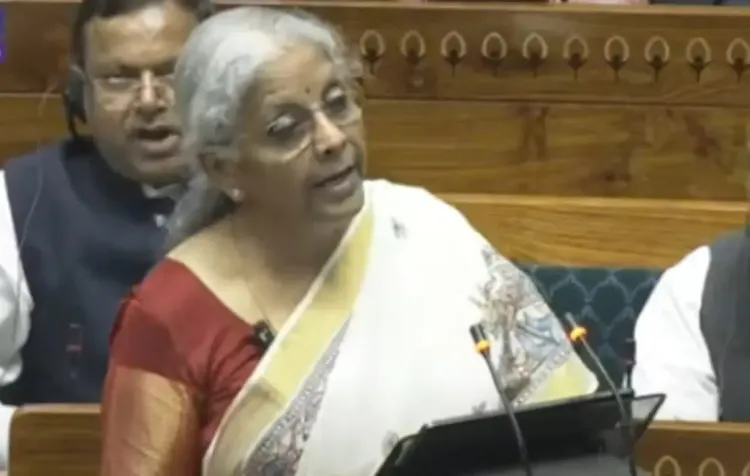Union Budget 2025-26: 10,000 New Medical College Seats and Daycare Cancer Centres

Synopsis
Key Takeaways
- 10,000 additional medical seats announced for next year.
- 200 daycare cancer centres to be established in 2025-26.
- Broadband connectivity to enhance telemedicine access.
- Medical colleges have doubled to 780 in the last decade.
- GST reduced on key anti-cancer drugs.
New Delhi, Feb 1 (NationPress) Union Finance Minister Nirmala Sitharaman declared on Saturday an increase of 10,000 seats in medical colleges alongside the establishment of daycare cancer centres in every district hospital.
While presenting her eighth consecutive budget and the NDA government's second complete Union Budget during its third term, the Finance Minister emphasized that India has experienced significant advancements in medical education over the past decade.
"Next year, 10,000 additional seats will be introduced in medical colleges, with a total of 75,000 seats projected over the next five years," she mentioned.
Moreover, "Every district hospital will feature daycare cancer centres, with approximately 200 centres to be launched in 2025-26," the Finance Minister added.
Additionally, "Enhancing broadband connectivity at primary health centres will facilitate the growth of telemedicine services for rural patients at the village level," she noted.
Over the last decade, the number of medical colleges in India has surged to 780 in 2024-25 from just 387 in 2013-14, marking a 102% growth.
During the same timeframe, MBBS seats increased from 51,348 to 1,18,137, reflecting a 130% increase.
In the previous budget, the government provided customs duty exemptions and reduced GST rates on three anti-cancer drugs.
The three anti-cancer medications include Trastuzumab, Osimertinib, and Durvalumab.
The government also reduced the GST rate from 12% to 5% on these three cancer medications.
India is witnessing a significant rise in cancer cases. A Lancet study revealed that India recorded approximately 12 lakh new cancer cases and 9.3 lakh deaths in 2019, making it the second-highest contributor to the disease burden in Asia.
This number escalated to 13.9 lakh in 2020, reaching 14.2 lakh and 14.6 lakh in 2021 and 2022, respectively, according to the study.









